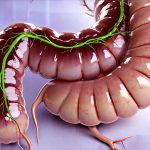Our modern world is awash in a sea of environmental toxins – chemicals present in our air, water, food, and everyday products. While often invisible, these substances exert a profound influence on our health, extending far beyond immediately obvious effects. Increasingly, research highlights the intricate connection between environmental exposures and the gut microbiota, the vast community of microorganisms residing in our digestive tract. This isn’t merely about digestion; the gut microbiome plays a critical role in immune function, mental health, nutrient absorption, and overall wellbeing. Disrupting this delicate ecosystem can have far-reaching consequences, contributing to chronic diseases and diminished vitality.
The challenge lies in the pervasive nature of these toxins. From pesticides used in agriculture to plastics leaching into our food supply, and heavy metals found in water sources, constant low-level exposure is often more common than dramatic acute events. This continuous assault can subtly but significantly alter the composition and function of our gut microbiota, leading to dysbiosis – an imbalance characterized by a reduction in beneficial bacteria and an overgrowth of potentially harmful ones. Understanding how specific toxins interact with the microbiome and what steps we can take to mitigate their impact is crucial for protecting our health in today’s environment. If you experience unexplained symptoms like nausea, it’s worth investigating ‘nausea without cause’.
The Mechanisms of Disruption
Environmental toxins don’t simply “attack” the gut microbiota; they disrupt it through a variety of complex mechanisms. Many act as stressors, triggering inflammatory responses within the digestive tract. This inflammation directly damages beneficial bacteria and creates an environment that favors the growth of opportunistic pathogens. Other toxins interfere with microbial metabolism, altering the production of essential short-chain fatty acids (SCFAs) – vital compounds produced by gut bacteria that nourish colon cells, regulate immune function, and influence brain health.
Furthermore, some environmental chemicals can directly target bacterial DNA or cell walls, causing cellular damage or death. The impact isn’t uniform across all species; beneficial bacteria are often more vulnerable to these toxic effects than their less desirable counterparts. This selective pressure further exacerbates dysbiosis. Consider bisphenol A (BPA) found in plastics – studies have demonstrated its ability to reduce the diversity of gut microbes and promote inflammation, potentially increasing susceptibility to metabolic disorders. Similarly, glyphosate, a widely used herbicide, has been shown to disrupt microbial metabolism and compromise gut barrier integrity. Understanding gut inflammation can help you identify the root cause of energy imbalances.
The gut is not an isolated system. Environmental toxins can also influence the microbiome indirectly through their effects on other organs, such as the liver and kidneys – key players in detoxification processes. When these organs are overwhelmed with toxin load, it can alter the composition of metabolites entering the gut, further impacting microbial communities. This interconnectedness underscores the holistic nature of environmental health and the importance of addressing toxin exposure from multiple angles.
Common Culprits & Their Effects
The range of environmental toxins capable of disrupting the gut microbiome is extensive. Here are some prominent examples:
- Pesticides: Disrupt microbial diversity, increase intestinal permeability (“leaky gut”), and promote inflammation. Organophosphates in particular have been linked to reduced SCFA production.
- Heavy Metals (lead, mercury, cadmium): Accumulate in the gut lining, damaging beneficial bacteria and impairing nutrient absorption. They can also induce oxidative stress, further exacerbating microbial imbalances.
- Persistent Organic Pollutants (POPs) – PCBs, dioxins: Interfere with hormone regulation and immune function, indirectly impacting the microbiome through systemic effects.
- Phthalates & BPA (endocrine disruptors): Reduce microbial diversity, alter gut barrier integrity, and potentially contribute to obesity and metabolic disorders.
- Air Pollution Particles: Studies suggest that airborne particulate matter can directly impact the gut microbiome composition by translocating into the digestive tract or indirectly via systemic inflammation.
The effects of these toxins aren’t always immediate. Chronic low-level exposure often leads to a gradual erosion of microbial diversity and function, potentially manifesting as subtle symptoms like fatigue, bloating, food sensitivities, or mood disturbances before progressing to more serious health conditions. It’s also important to note that individual susceptibility varies based on factors like genetics, diet, lifestyle, and pre-existing gut health. If you experience frequent nausea related to travel, consider motion sickness.
Strategies for Mitigation: Dietary Interventions
One of the most powerful tools we have to protect our gut microbiome from environmental toxins is through dietary interventions. A whole-food, plant-based diet rich in fiber provides nourishment for beneficial bacteria and promotes microbial diversity.
Here’s a step-by-step approach:
- Increase Fiber Intake: Aim for at least 25-30 grams of fiber per day from sources like fruits, vegetables, legumes, and whole grains. Fiber acts as a prebiotic, feeding the good bacteria in your gut.
- Prioritize Fermented Foods: Incorporate probiotic-rich foods like yogurt (if tolerated), kefir, sauerkraut, kimchi, kombucha, and miso into your diet to directly introduce beneficial microbes.
- Reduce Processed Food & Sugar: These can fuel the growth of harmful bacteria and contribute to inflammation.
- Choose Organic Whenever Possible: This minimizes exposure to pesticides and herbicides. If organic isn’t accessible or affordable, prioritize washing conventionally grown produce thoroughly.
Beyond specific food choices, consider incorporating detoxifying foods into your diet. Cruciferous vegetables (broccoli, cauliflower, kale) contain compounds that support liver detoxification processes, helping the body eliminate toxins more efficiently. Similarly, cilantro and parsley have been shown to aid in heavy metal chelation. Poor digestion can be a sign of GERD and water brash.
Gut Healing Protocols & Supplementation
While dietary changes are foundational, additional protocols can help repair gut damage caused by environmental toxin exposure. Gut healing focuses on restoring the integrity of the intestinal barrier – often compromised by toxins and inflammation. This involves strategies like:
- L-glutamine supplementation: An amino acid that supports the repair of damaged intestinal cells.
- Collagen peptides: Provide building blocks for gut lining regeneration.
- Zinc carnosine: Helps protect and heal the stomach and intestinal lining.
Supplementation with probiotics can also be beneficial, but it’s crucial to choose strains that have been researched and shown to address specific imbalances or sensitivities. A diverse probiotic blend is often more effective than a single strain. Be aware that probiotics are not a one-size-fits-all solution; some individuals may experience adverse reactions, so starting with a low dose and monitoring for symptoms is recommended. It’s important to understand how acid reflux affects sleep quality as it can impact overall health.
Minimizing Exposure: Lifestyle & Environmental Adjustments
Ultimately, the most effective approach to protecting your gut microbiome is to minimize exposure to environmental toxins in the first place. This requires conscious lifestyle adjustments:
- Filter Your Water: Invest in a high-quality water filter that removes heavy metals, pesticides, and other contaminants.
- Choose Non-Toxic Cleaning & Personal Care Products: Many conventional products contain harmful chemicals. Opt for natural alternatives or brands committed to transparency and safety.
- Reduce Plastic Use: BPA and phthalates are prevalent in plastic packaging. Choose glass, stainless steel, or reusable containers whenever possible.
- Improve Indoor Air Quality: Utilize air purifiers with HEPA filters to remove airborne pollutants. Ensure adequate ventilation and avoid using strong fragrances or cleaning agents indoors.
- Support Detoxification Pathways: Regular exercise, sufficient sleep, and stress management all support the body’s natural detoxification processes.
Consider scheduling a colonoscopy for regular health screenings.
By addressing both exposure reduction and gut health restoration, we can mitigate the negative impact of environmental toxins and cultivate a resilient microbiome – laying the foundation for long-term wellbeing in our increasingly toxic world. If you suspect you may have a duodenal ulcer, consult with your doctor.


















